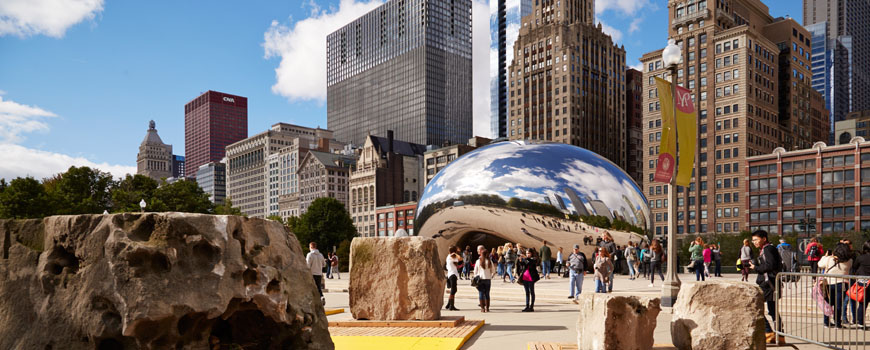Mies van der Rohe’s Farnsworth House – Plano, IL
Illinois, United States
Phone: +1 630.552.0052
Website: https://edithfarnsworthhouse.org/

The Farnsworth House (recently renamed Edith Farnsworth House) is a world-famous modernist building and National Historic Landmark in Plano, Illinois designed by German-American architect Ludwig Mies van der Rohe in 1951.
Above: the Edith Farnsworth House in Spring; photo Wsifrancis via Flickr (CC BY-NC-ND 2.0)
History
The house is a 1500-sqft / 140-sqm single-story building located in the middle of a wooden property near the Fox River, about 50 miles southwest of Downtown Chicago.
The design of the house was commissioned to Mies in 1945 by Dr. Edith Farnsworth (1903-1977) who wanted to create a private country retreat in the pastoral landscape of northwestern Kendall County. The house was completed in 1951, despite problems related to construction costs that had somewhat compromised the relationship between architect and client.
Edith Farnsworth sold the house to British businessman Lord Peter Palumbo In 1972. Palumbo, a contemporary art collector, began comprehensive restoration works and installed several artworks including pieces by Anthony Caro and Richard Serra on the house’s grounds. In 2003, the Farnworth Hosue was acquired by the National Trust for Historic Preservation and opened to the public shortly afterward.
Design
Completed in 1951, the house is a steel and glass building with a rectangular open plan, based on a 0,80×0,58 meter rectangular grid and enclosed by floor-to-ceiling glass panels, in which all functional areas are arranged around a central service core that contains the bathroom, kitchen, and fireplace. A rectangular terrace and a porch border the house on its south and west sides.
Due to the riverside location of the house, Mies raised it five feet 3 inches over the ground to prevent damage by flooding; this proved not enough though since the building has experienced severe flooding six times since its completion.
Mies’ extensive use of glass walls was aimed to create a strong visual and symbolic relationship between the house and the surrounding landscape.
“When one looks at Nature through the glass walls of the Farnsworth House, it takes on a deeper significance than when one stands outside. More of Nature is thus expressed – it becomes part of a greater whole.” Mies van der Rohe
Edith Farnsworth House, north facade; photo Wsifrancis via Flickr (CC BY-NC-ND 2.0)
Ludwig Mies Van der Rohe, Edith Farnsworth House, plan; image Historic American Buildings Survey, courtesy of Library of Congress
The large floor-to-ceiling glass walls of the house create expansive views from the inside towards the pastoral setting around; photos Wsifrancis via Flickr (CC BY-NC-ND 2.0)
Located in an area prone to flooding, the house is raised 5 feet 3 inches over the ground; photo by End User via Flickr (CC BY-NC-ND 2.0)
Section through terrace and porch; image courtesy of Columbia University (columbia.edu)
A drawing of the house’s underfloor heating system; image courtesy of Columbia University
Structure
Structurally, the house consists of two concrete and steel slabs, one forming the building’s raised floor and the other the roof, supported by eight slender I-beam steel columns; all the house’s structural steel elements are painted white. Instead of resting on them, the slabs have been welded to the steel columns’ edges, thus giving a sense of weightlessness to the whole structure.
A view from the southeast; photo Wsifrancis via Flickr (CC BY-NC-ND 2.0)
The house in winter, photo Jonathan Rieke via Flickr (CC BY-NC 2.0)
Structural details; images courtesy of Columbia University
Materials
The floor, which also conceals an underfloor radiant heating system, is paved with travertine stones, while the central utility core is clad in primavera plywood. Overall, there are only five visible materials in the Farnsworth House: stone, white-painted steel, clear glass, plaster, and plywood.
A view from the porch; photo Wsifrancis via Flickr (CC BY-NC-ND 2.0)
An interior panorama of the Farnsworth House; the wooden service core is visible in the background; photo Nguyen-Anh Le via Flickr (CC BY-NC-ND 2.0)
Reception and legacy
Though a few detractors ironically compared it to “a fish tank” and despite some technical flaws (the client complained with Mies about the house’s lack of thermal insulation and poor roof waterproofing), the Farnsworth House was immediately recognized by most critics as an architectural masterpiece. Widely regarded as one of the most influential buildings of the 20th century, for over 70 years the house has influenced countless architects and inspired other iconic buildings, such as the Glass House by Philip Johnson in New Canaan, CT, and the Olnick Spanu House by Alberto Campo Baeza in Garrison, N.Y.
How our readers rate this museum (you can vote)
copyright Inexhibit 2025 - ISSN: 2283-5474

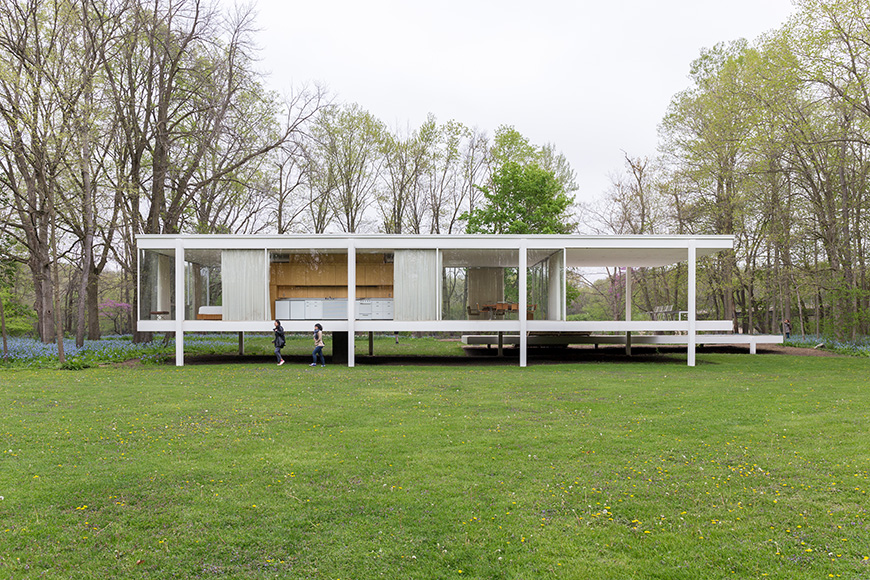
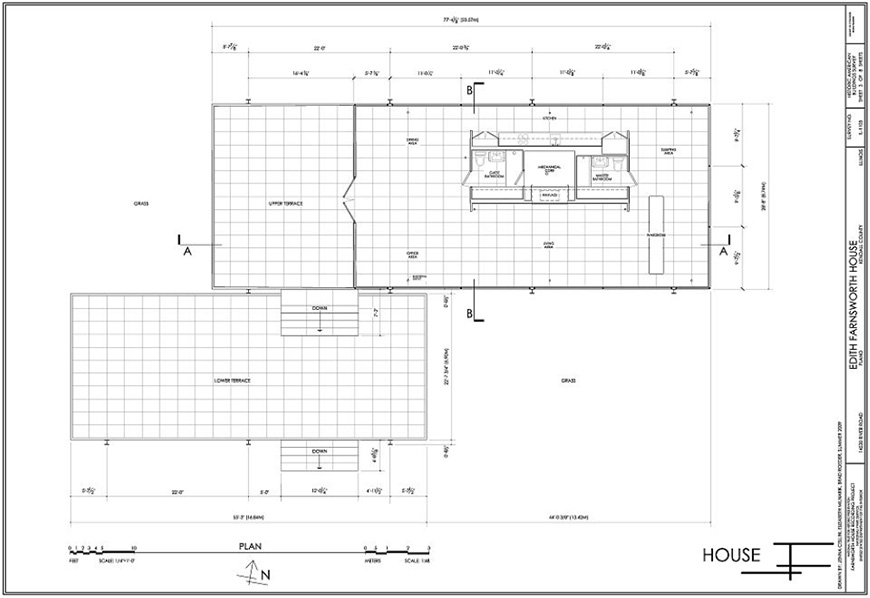
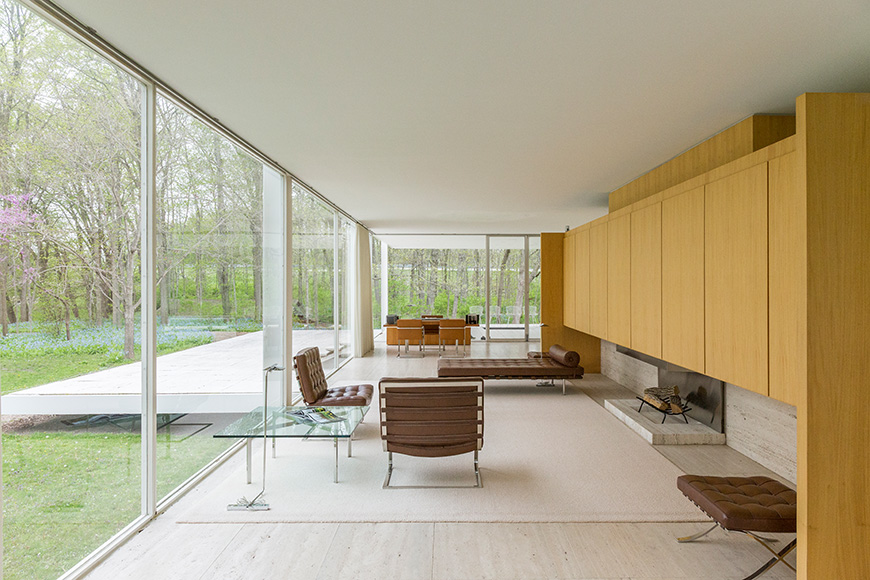

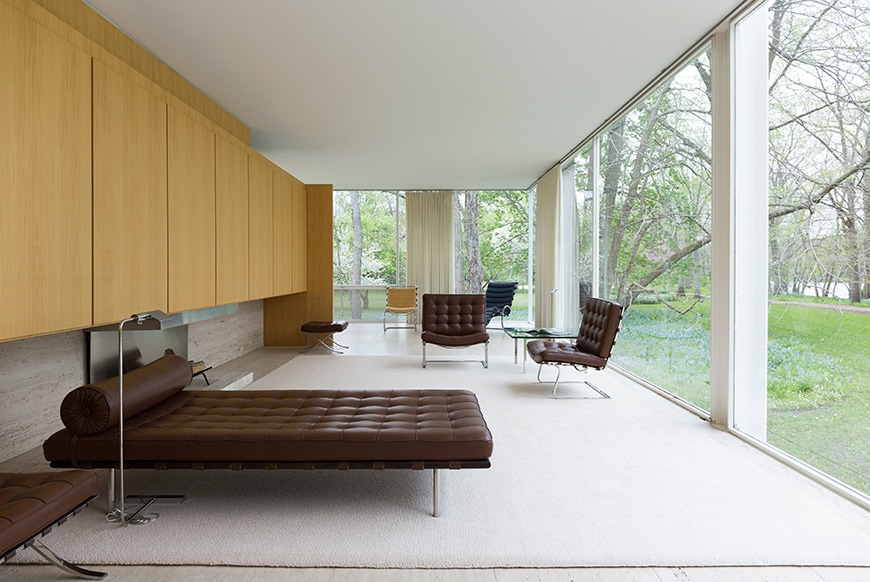

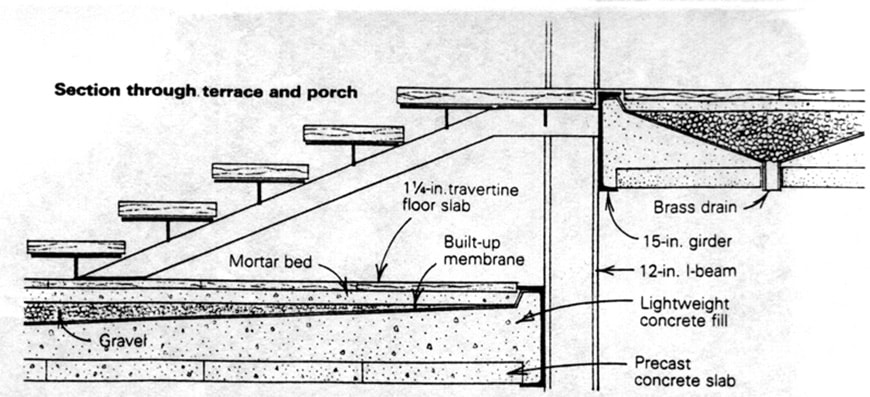



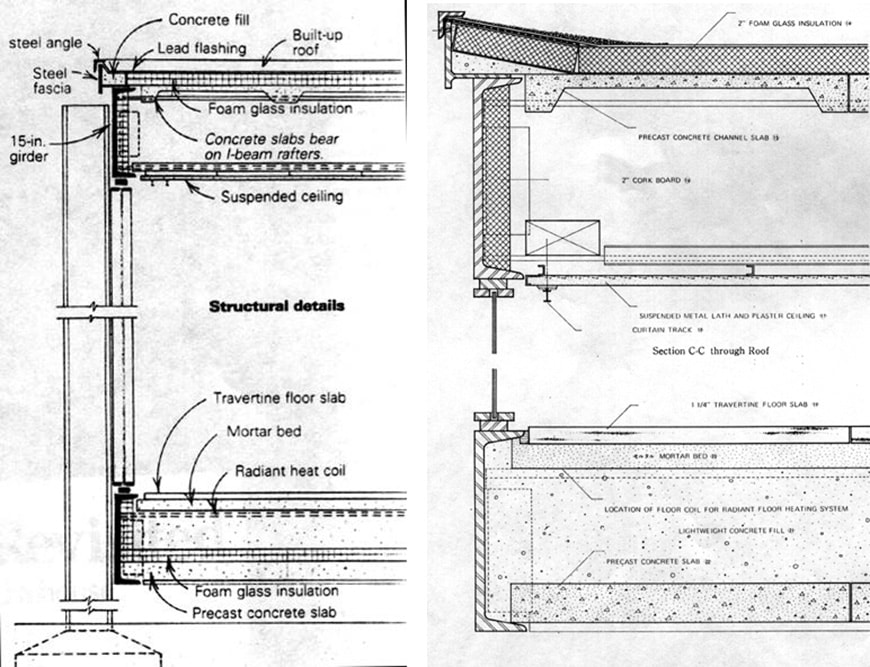

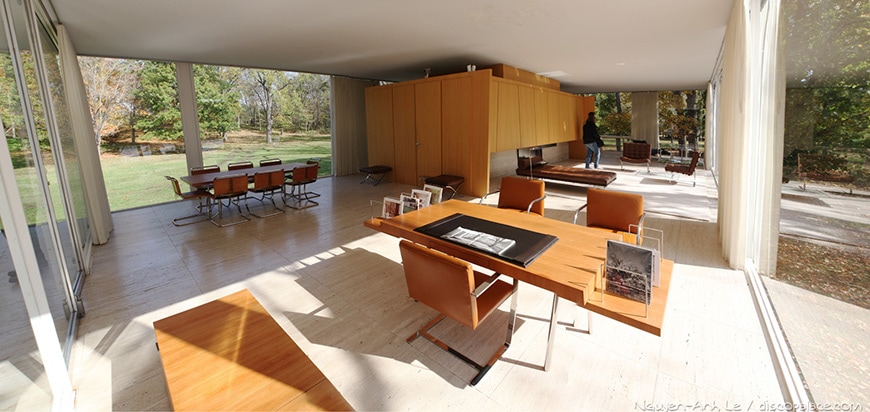

 (4 votes, average: 4.75 out of 5)
(4 votes, average: 4.75 out of 5)